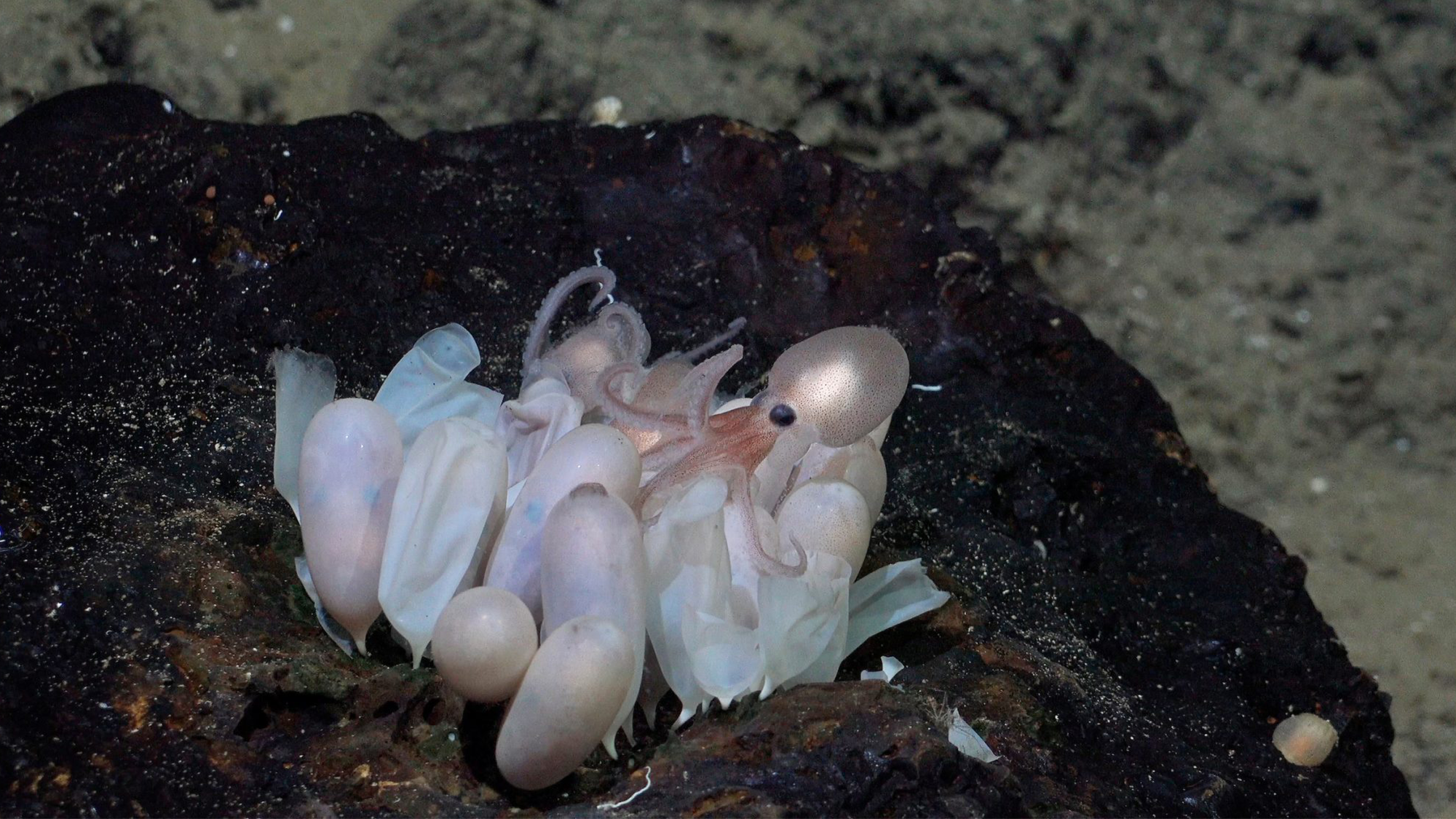

Scientists have discovered at least four new octopus species off the Pacific coast of Costa Rica. According to Schmidt Ocean Institute, the new species were spotted around the region’s hydrothermal vents bursting with life in an area about 100 square miles.
[Related: Female octopuses will chuck seashells at males who irk them.]
An international team of researchers found the new cephalopods during two expeditions of the seamounts last year aboard the R/V Falkor (too). In June 2023, two octopus nurseries, one skate nursery, and two low-temperature hydrothermal springs were discovered by researchers using a remotely operated vehicle named SuBasitan. Scientists went back to the nurseries in December and confirmed that the octopuses appear to be active year-round. They also observed several other new octopus species away from the hydrothermal springs in the area roughly 10 to 30 nautical miles apart.
While the four new species haven’t been formally described, one has been named the Dorado octopus. It was found on a rock unofficially called El Dorado hill. It is distantly related to a species of pearly octopus that was found at Davidson Seamount in California in 2018. The Dorado octopus is also a type of Muusoctopus, a genus that has possibly evolved to gather to brood their eggs in warmer water near the vents. They were found about 1.5 miles below the surface of the ocean.

The species are currently being described by Janet Voight, associate curator of invertebrate zoology from the Field Museum of Natural History, and Fiorella Vasquez from the Zoological Museum at the University of Costa Rica.
“Through hard work, our team discovered new hydrothermal springs offshore Costa Rica and confirmed that they host nurseries of deep-sea octopus and unique biodiversity,” oceanographer Beth Orcutt of the Bigelow Laboratory for Ocean Sciences in Maine said in a statement. “It was less than a decade ago that low-temperature hydrothermal venting was confirmed on ancient volcanoes away from mid-ocean ridges. These sites are significantly difficult to find since you cannot detect their signatures in the water column.”
[Related: Octopuses rewrite their own RNA to survive freezing temperatures.]
More than 160 deep-sea animal specimens were collected during the December expedition. They will join the 150 specimens uncovered in June and be archived at the Museum of Zoology at the University of Costa Rica. According to Schmidt, this marks one of the first times that all biological specimens will be stored within the Latin American country from which they were acquired after a deep-sea expedition, instead of going to Europe or the United States. Keeping the specimens in Costa Rica should enable local scientists to easily access samples for research and potentially inform deep sea management strategies.
“The impact of the R/V Falkor (too) expeditions on understanding the deep Pacific waters of Costa Rica will last into the future and hopefully create awareness that evolves into policies to protect the deep sea of the country,” oceanographer Jorge Cortés of the University of Costa Rica said in a statement. “I hope that the expedition serves as an inspiration for new generations. We need more international collaborations to advance knowledge of our deep-sea heritage.”
